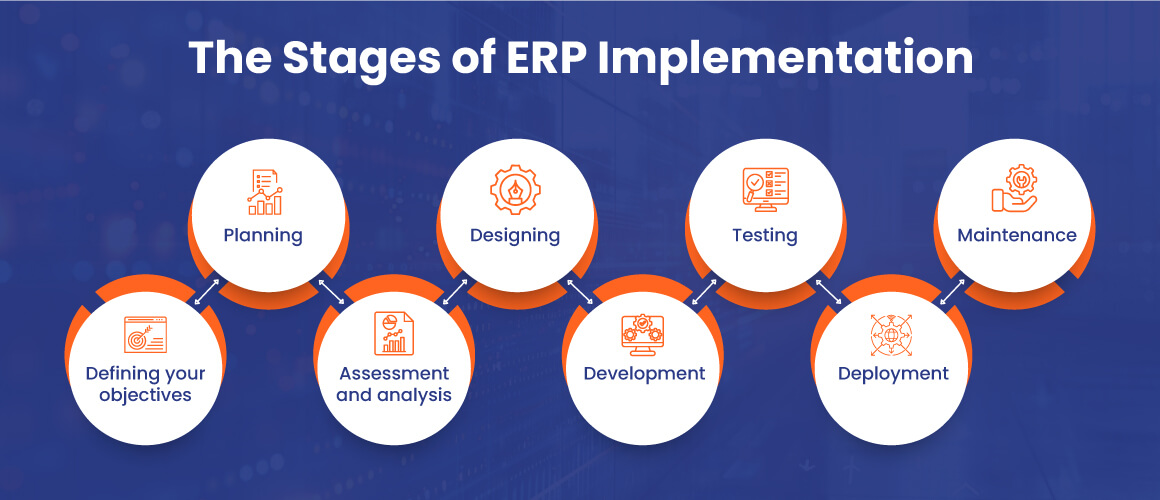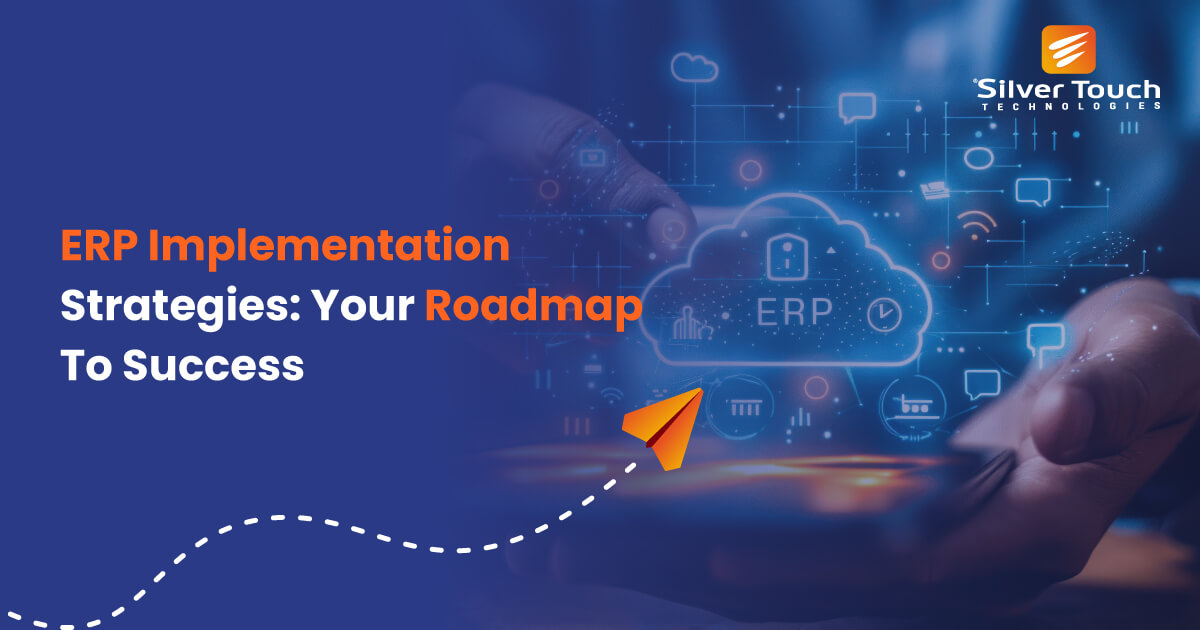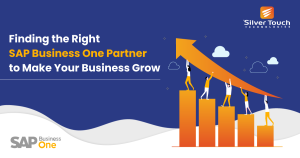The world of ERPs is expanding quite fast. In fact, the demand for ERP is so high that the worldwide ERP market size is expected to reach around $86 billion by 2027. ERP systems can bind a business’s different units together and tie the loose ends into a tight knot. These systems streamline your business processes and take your company to a completely different level. However, all these benefits can be achieved only if the ERP implementation strategies is done perfectly.
Here, we will take you through the various ERP implementation strategies that can be beneficial for your business.
4 ERP Implementation Strategies:
There are several proven strategies that are used to transition to a new ERP system. Let us have a look at what these strategies are:
Big Bang:
This strategy is known as the single-step method. All the organisation’s users are transitioned to the ERP system concurrently. To execute this approach, businesses must complete the configuration and testing of the new ERP system before the go-live date and train all the employees beforehand.
One major advantage of this ERP strategy is that you transition to ERP quickly. This results in higher productivity and lower operational costs. However, once a company transitions to the new system, it takes much work to return to the original state. In this approach, it is important to get everything done right in the first go, as even the slightest glitch in the system can impact business performance.
Phased rollout:
ERP systems are deployed in different phases in this approach. Thus, the entire deployment is carried out over an extended time. In fact, it may take weeks or even months for the whole of the ERP system to be implemented in the workplace. This approach is more risk-free than the Big Bang approach.
The phased rollout approach enables companies to implement ERP solutions in those business processes that offer the most immediate benefits. It allows employees to become familiar with the different functionalities of the ERP system. However, one drawback of this approach is that it takes longer for the company to experience the full benefits of the ERP system. Also, companies need to bear the expense of running two systems at the same time.
Parallel adoption:
In this method, companies use their legacy systems in parallel with the new ERP system for a particular time. This is once again a risk-free approach because there is always the possibility of reverting to the legacy system in case there is any problem implementing the ERP system. Because of the strategy’s risk-free approach, many companies use this strategy for the various functionalities of their business.
The parallel adoption strategy makes it easier for ERP users to gradually adopt the new system. However, parallel adoption is, again, an expensive process. It requires a lot of resources and time to keep running two systems simultaneously. Also, ensuring that consistent data is maintained on both systems is a complicated affair.
Hybrid:
The hybrid strategy combines the elements of other ERP systems. For example, companies may transition to core ERP modules using the Big Bang strategy and then roll out the different modules in a phased manner. Many companies also use phased rollout and parallel adoption approaches together.
The hybrid method has its benefits. It allows the companies to have greater control over their business operations. All the business processes also take place smoothly and effectively without any hindrance.
The ERP Implementation Steps:
Regardless of a company’s ERP implementation strategy, the implementation steps are similar. When companies roll out ERP systems, they first configure the ERP software and take the necessary preparatory steps, such as migrating data, testing the modules, and offering training to the employees. The companies then deploy the software for the users and offer them the necessary training and support.
In the Big Bang strategy, a company primarily focuses on implementing each of the various steps consecutively. After the go-live phase, the entire focus is given to the scope for further enhancement and ongoing support. In the case of phased rollout and parallel implementation approaches, companies mostly work on multiple ERP implementation stages simultaneously. This is mainly done to speed up the ERP implementation process.
How to Select an ERP Implementation Strategy
There are quite a few factors that need to be considered before you pick an implementation strategy from the different ERP implementation strategies:
Company size:
The Big Bang strategy is the best choice if you own a small or midsize firm. With this strategy, it becomes easier to manage the entire process of transitioning to a new system at once because there are only a few employees and locations to handle. Larger companies find this approach to be quite risky.
Risk factor:
Next, you need to identify the risk factor. If the ERP system has a problem, what impact would it have on your business? A company that entirely relies on its systems 24/7 finds the Big Bang approach unsuitable because of the risk factors involved. They mostly choose to adopt parallel technology for their critical business modules.
Desired return on investment:
With phased adoption, you will be able to transition to ERP modules that are inevitable for your business. This helps generate ROI quickly. The Big Bang strategy also has the potential for more significant ROI because of its quick implementation. However, if there is any potential glitch in the system, the ROI can also be significantly hampered.
Cost:
This is another crucial factor determining the ERP implementation choice. The Big Bang strategy is the most suitable option if you are operating on a low budget. However, if cost isn’t a factor, you can opt for phased rollout, parallel adoption, or hybrid strategies. This will allow you to experience the benefits of ERP in a risk-free manner.
The Stages of ERP Implementation:

Defining your objectives:
Having the right goals in place is vital to the success of ERP implementation. Why do you want to implement ERP? Is it to reduce cost, increase efficiency, enhance customer satisfaction, or something else? Once you have defined the exact goals and objectives, you can align your ERP implementation strategies with them.
Planning:
This stage involves multiple steps. From understanding the project scope to creating a complete plan along with the time frame, it falls under this stage.
Assessment and analysis:
During this phase, you will have to identify the various gaps in the current system. Understanding how ERP can be implemented to mitigate the gaps and improve your business operations is essential.
Designing:
The project team uses the data obtained in the analysis phase to create an ERP design. This gives a list of the modules that will be implemented along with their configurations.
Development:
Here, the ERP system is built from scratch, and customisations are made to meet the company’s exact demands. This stage involves configuring the different modules and creating the required interface for the other systems currently running in the organisation.
Testing:
A series of manual and automated tests are required to check the functionality of newly developed systems. This includes unit testing and user acceptance tests.
Deployment:
Once testing is completed, the system is installed in production and used by end users. The users are also trained to use the ERP system. In this stage, the data can be migrated from the existing system to the new one.
Maintenance:
After becoming LIVE to users, the system requires operational support to keep running effectively without glitches. Maintenance activities mainly involve providing user support, monitoring system performance, and applying the necessary patches as and when necessary.
Tips for Hassle-free ERP Implementation:
Here are some valuable ERP implementation tips that can help maximise the outcome you get from the ERP solution:
Set achievable expectations:
It is imperative to have practical thoughts about the outcomes of transition to ERP. No project will go smoothly without any hiccups; so this needs to be kept in mind. You must also keep in mind the different ERP implementation challenges and strategies and proceed accordingly.
Consider the scope for customisation:
Most companies look for customisations in their ERP solutions. So, before implementing the ERP, it is vital to understand how customisable the ERP solution can be to meet business demands.
Use the appropriate KPIs:
You can use ERP to track KPIs and measure the organisation’s progress. However, choose KPIs that are meaningful to your business goals. Do not choose KPIs simply for the sake of selecting them.
Choose the right ERP implementation partner:
The ERP partner you choose plays a significant role in the successful transition to ERP. So, go for one such partner with a good reputation in the industry. You must also check for reviews and ratings and then select a reliable ERP partner based on that.
Take your Business to the Next Level with ERP Solutions
Silver Touch: Your Ideal ERP Implementation
The best partner will offer you a wide range of services covering basic enterprise needs like accounting, finance, human resources, supply chain management, etc. So, if you are looking for all these capabilities in an ERP partner, then it is high time that you reach out to Silver Touch Technologies and avail of their services. The experts at Silver Touch Technologies will understand your ERP needs and implement the ERP solution accordingly. They will also customise the different modules to meet the business demands. You can even rely on Silver Touch experts for ongoing support for your ERP system.
Implementing an ERP implementation strategy in an organisation is both complex and challenging. However, by following the right approach and steps, you can quickly implement the ERP properly in your existing system. You must also keep in mind this is an ongoing process. So, you need to continuously evaluate the system’s performance to ensure it meets organisational demands.
FAQs on ERP Implementation Strategies
The ERP implementation time depends on various factors, such as the size of the organisation, the ERP modules that need to be implemented, and the strategy you wish to choose.
Yes, ERP systems are appropriate for businesses of all sizes. So, whatever the size of your business may be, you can definitely consider implementing ERP and enjoy the benefits.





